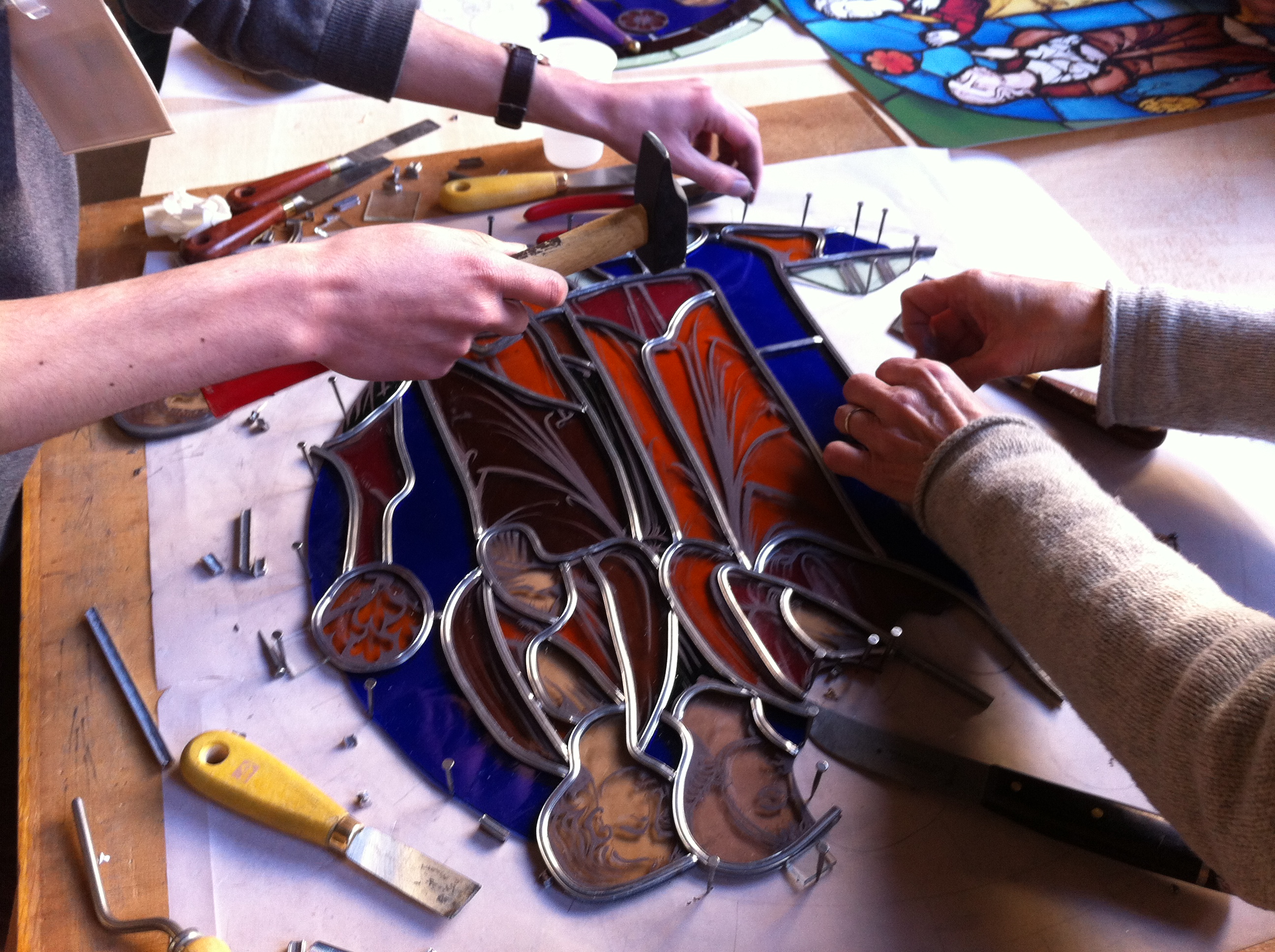Came on:
[Wikipedia]
[Google]
[Amazon]

 A came is a divider bar used between small pieces of
A came is a divider bar used between small pieces of

 A came is a divider bar used between small pieces of
A came is a divider bar used between small pieces of glass
Glass is an amorphous (non-crystalline solid, non-crystalline) solid. Because it is often transparency and translucency, transparent and chemically inert, glass has found widespread practical, technological, and decorative use in window pane ...
to make a larger glazing panel.
There are two kinds of came: the H-shaped sections that hold two pieces together and the U-shaped sections that are used for the borders. Cames are mostly made of lead
Lead () is a chemical element; it has Chemical symbol, symbol Pb (from Latin ) and atomic number 82. It is a Heavy metal (elements), heavy metal that is density, denser than most common materials. Lead is Mohs scale, soft and Ductility, malleabl ...
, zinc
Zinc is a chemical element; it has symbol Zn and atomic number 30. It is a slightly brittle metal at room temperature and has a shiny-greyish appearance when oxidation is removed. It is the first element in group 12 (IIB) of the periodic tabl ...
, copper
Copper is a chemical element; it has symbol Cu (from Latin ) and atomic number 29. It is a soft, malleable, and ductile metal with very high thermal and electrical conductivity. A freshly exposed surface of pure copper has a pinkish-orang ...
, brass
Brass is an alloy of copper and zinc, in proportions which can be varied to achieve different colours and mechanical, electrical, acoustic and chemical properties, but copper typically has the larger proportion, generally copper and zinc. I ...
or brass-capped lead.Stevenson, Christine. (2004). ''Creative Stained Glass: Modern Designs & Simple Techniques.'' Lark Books. p. 12. . Of the metal strips, lead is softer and more flexible, making it easier to cut and bend. The harder metals are used to work with slightly curved lines and pieces that require greater structural support. They can also be used as border came, once again for stability and support.Shannon, George and Pat Torlen. (2002). ''The new stained glass: techniques, projects, patterns, designs.'' Sterling Publishing Company, Inc. p. 51. .
Purpose
Came serves three purposes:Berry, Leigh Ann. (2003). ''Basic Stained Glass Making: All the Skills and Tools You Need to Get Started.'' Stackpole Books. p. 10. . # it joins the pieces of glass (the H-shaped channels are used to join two pieces of glass and the U-shaped are used for the border), # forms the lines within the glasswork and # provides the metal to be soldered, thus joining the pieces of came.Came face
Came comes in varying face sizes and shapes. They can be round, flat or colonial shaped strips. They can also be narrow or have wide faces.Came strips
Came strips are 4 to 6 feet in length. The came strips can be a leaf, channel or heart came:"The leaf is the surface on either side of the came that overlaps the edges of the glass and is left exposed once the panel has been assembled. It has either a flat or rounded profile and its width is the measurement given when a came size is listed.
The channel runs the length of the came. H-shaped came has 2 back-to-back channels that hold adjoining glass pieces in position on the interior of a stained glass panel. It can also be used as a border came in certain situations. U-shaped came has only one channel and is used as a border around the perimeter of panels.
The heart is the part of the came that the glass pieces rest against inside the channel. The width of lead came pattern lines is usually 1/16 inch and allows for the thickness of the came's heart to fit between the adjoining pieces of glass."The width and depth of the came used to assemble the piece affect the pattern for cutting glass and for creating the finished piece.Shannon, George and Pat Torlen. (2002). ''The new stained glass: techniques, projects, patterns, designs.'' Sterling Publishing Company, Inc. p. 53. .
Border cames
Border cames are U-channel cames that are used on the outside edges of works. The selection of the metal of the came may vary depending upon the work. For instance, zinc may be a solid selection for free-hanging panels, because it is rigid, but lightweight. Architectural panels, on the other hand, are often enclosed in framing and therefore do not require a hard metal.Bumpers or lead spacers
Bumpers, or lead spacers, are pieces of cut came strips that are left over. They can be used temporarily in the glasswork process to hold together two pieces of glass to estimate the spacing of the finished project.Payne, Vicki. (2005). ''Traditional Leaded Glass Crafting: Projects & Techniques.'' Sterling Publishing Company, Inc. p. 28. .See also
* * *References
{{Reflist Glass applications Windows Stained glass